Serving 250 students in grades 7-8, Dove Science Academy Tulsa Junior High School ranks in the top 50% of all schools in Oklahoma for overall test scores (math proficiency is top 10%, and reading proficiency is bottom 50%).
The percentage of students achieving proficiency in math was 56% (which was higher than the Oklahoma state average of 33%). The percentage of students achieving proficiency in reading/language arts was 21% (which was lower than the Oklahoma state average of 34%).
The student:teacher ratio of 18:1 was higher than the Oklahoma state level of 15:1.
Minority enrollment was 84% of the student body (majority Hispanic), which was higher than the Oklahoma state average of 56% (majority Hispanic).
School Overview
Grades Offered
Grades 7-8
Total Students
250 students
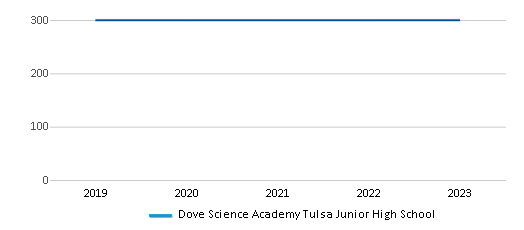
Gender %
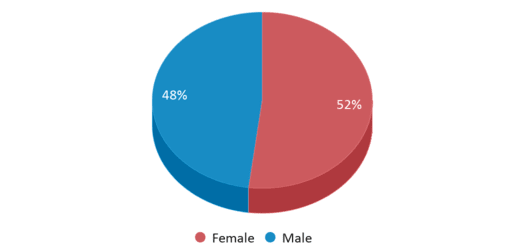
Total Classroom Teachers
14 teachers
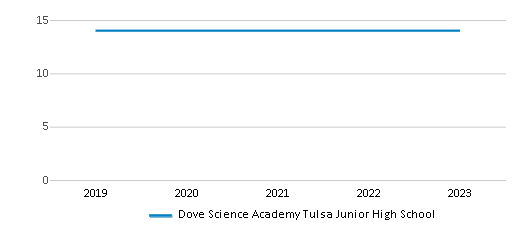
Students by Grade
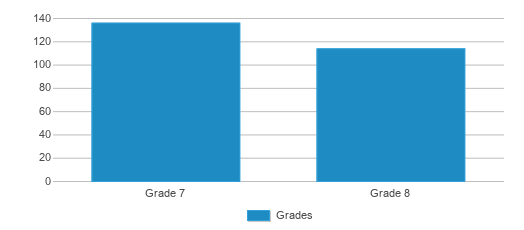
School Rankings
Math Test Scores (% Proficient)
(18-19)56%
33%
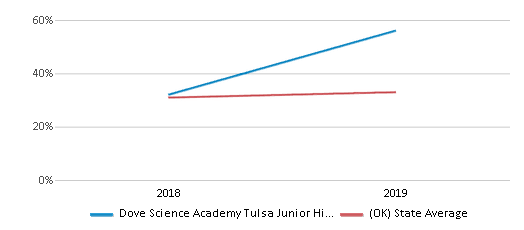
Reading/Language Arts Test Scores (% Proficient)
(18-19)21%
34%
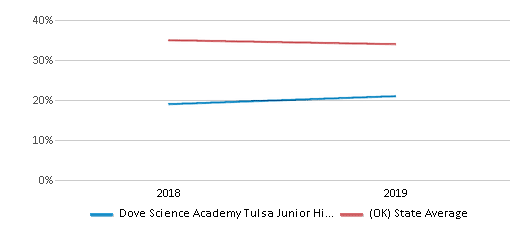
Student : Teacher Ratio
18:1
15:1
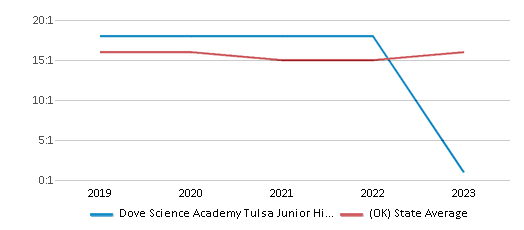
American Indian
3%
11%
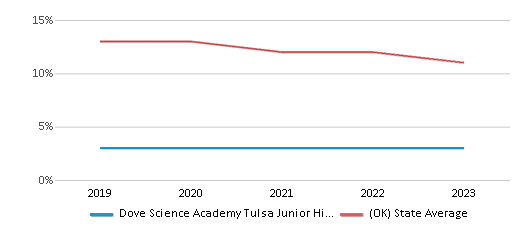
Asian
n/a
2%
Hispanic
64%
20%
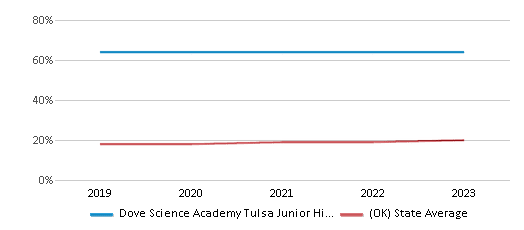
Black
12%
8%
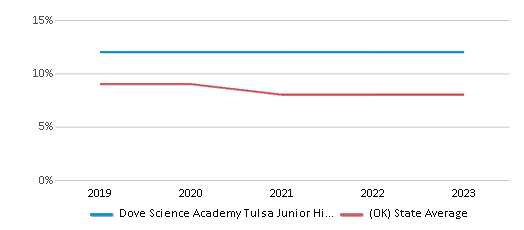
White
16%
44%
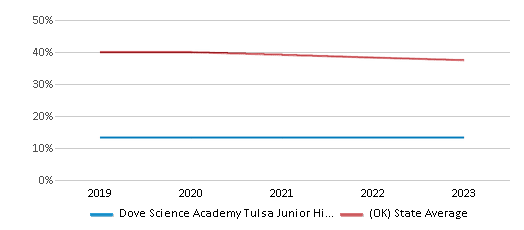
Hawaiian
n/a
1%
Two or more races
5%
14%
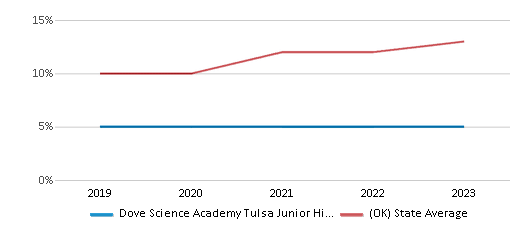
All Ethnic Groups
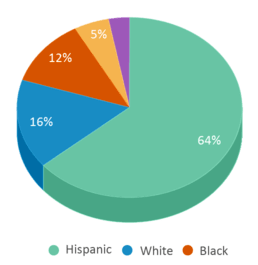
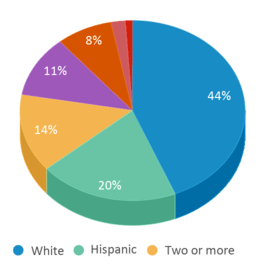
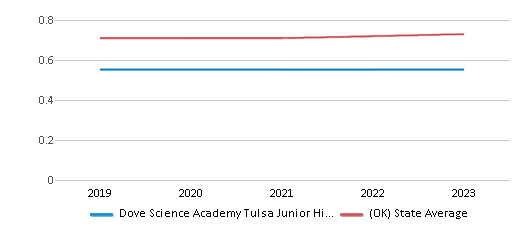
School Statewide Testing
School District Name
Source: National Center for Education Statistics (NCES), OK Dept. of Education
Frequently Asked Questions
What percent of students have achieved state testing proficiency in math and reading?
56% of students have achieved math proficiency (compared to the 33% OK state average), while 21% of students have achieved reading proficiency (compared to the 34% OK state average).
How many students attend Dove Science Academy Tulsa Junior High School?
250 students attend Dove Science Academy Tulsa Junior High School.
What is the racial composition of the student body?
64% of Dove Science Academy Tulsa Junior High School students are Hispanic, 16% of students are White, 12% of students are Black, 5% of students are Two or more races, and 3% of students are American Indian.
What is the student:teacher ratio of Dove Science Academy Tulsa Junior High School?
Dove Science Academy Tulsa Junior High School has a student ration of 18:1, which is higher than the Oklahoma state average of 15:1.
What grades does Dove Science Academy Tulsa Junior High School offer ?
Dove Science Academy Tulsa Junior High School offers enrollment in grades 7-8
What school district is Dove Science Academy Tulsa Junior High School part of?
Dove Science Academy Tulsa Junior High School is part of Dove Schools Of Tulsa School District.
Recent Articles
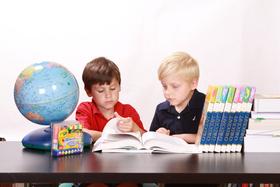
The Impact of Coronavirus on Public Schools
This article discusses the widespread impact of COVID-19 on public schools, addressing issues such as school closures, remote learning challenges, effects on standardized testing, and concerns about student progress. It also provides tips for parents suddenly faced with homeschooling responsibilities.

What Public School Students Should Expect After COVID-19
In this article, we’ll take a closer look at the financial impact of COVID-19 on public schools and what to expect in the future. We’ll talk about the effects of budget cuts and other challenges affecting the public school system for the remainder of this school year and into the next.

February 05, 2025
Understanding the U.S. Department of Education: Structure, Impact, and EvolutionWe explore how the Department of Education shapes American education, from its cabinet-level leadership to its impact on millions of students, written for general audiences seeking clarity on this vital institution.





